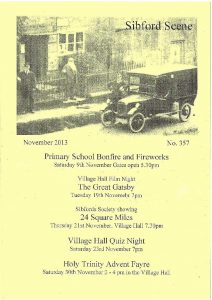Crash of Wellington Bomber
On Sunday December 7th 1941 at 18.30 hrs, during a freak snowstorm, two RAF officers, pilot officer WTG Gabriel and pilot officer JA Bright of RAF Edgehill (Shennington Aerodrome) were walking on the main Banbury – Shipston road near Pitch Hill. They saw an aircraft fly over them, heading in a southerly direction, at very low altitude, only ten or twelve feet above the ground, with its landing lights on. After passing over these two officers, the aircraft hit the top of a telegraph pole situated at the top of Pitch Hill. It then gained a little height before the starboard wing dropped, the plane spun in and crashed in a field about 500 yards away, owned by Mr James Scruby of Sibford Ferris. This field lies approximately halfway between Sibford Elm and Burdrop. On impact, the aircraft burst into flames and broke in half, facing in a north easterly direction, the rear half at right angles to the front.
PO Gabriel and PO Bright ran to the scene of the crash and saw a crew member trying to move in the front half of the fuselage, near the wireless operator’s position. As they drew nearer the starboard petrol tanks exploded, setting the surrounding grass on fire.
After several unsuccessful attempts, P.O.s Gabriel and Bright managed to drag the badly injured and burning crew member clear of the fuselage, just as the port petrol tanks blew up, spraying the whole area with burning fuel.
The two RAF officers were then joined by the local police constable, PC Leslie Simons of Sibford police house. Together they extinguished the burning clothing on the airman and carried him to awaiting men who put him upon a hurdle and carried him to Dr Taylor’s house in Burdrop. Whilst this was taking place, the ammunition, oxygen bottles etc. were exploding with the intense heat, the plane and surrounding area blazing fiercely, the sky was lit up and the glow could be seen for many miles around.
At about this time, another crew member was found wandering in the field, concussed and in a state of shock, not knowing what had happened. He too was taken to Dr. Taylor.
As the telephone lines had been broken by the crashing aircraft, a passing motorist was asked to go to Banbury for the ambulance and to inform the police station of the incident. At 19.40 hrs Hook Norton fire brigade arrived and eventually extinguished the burning aircraft.
Later in the evening PC Simons, assisted by three other police officers and the medical officer from RAF Edgehill, flying officer Barr, recovered four bodies from the wreckage, badly burned and unrecognisable. They were taken to Mr James Scruby’s barn at Sibford Ferris, awaiting the visit of the Coroner, Mr Fortescue, the following afternoon. An RAF guard from Edgehill arrived at the scene at 20.45hrs and remained on duty throughout the night.
On Monday December 8th 1941 official enquires revealed that the crashed aircraft was a Vickers Wellington B1 twin engined bomber, No Z1089, a month old, only flown for 75 hours and carrying a crew of six. The aircraft and crew were all attached to 21 O.T.U. RAF Moreton-in-Marsh and had taken off at 18.00 hrs on December 7th on a cross country operational training flight. It entered low cloud and owing to the very bad weather conditions at the time iced up, went out of control and crashed. The crew members who died in the crash were:
P.O. Kenneth Wilfred Watson Aged 28 Pilot, Sgt. James Hubbard aged 20 Pilot, Sgt. Edwin F T Medder aged 26 W/OP Air Gunner, Sgt. Christopher G Tierney aged 21 W/OP Air Gunner. The injured crew members were Sgt. John Martin aged 23 Air Observer and Sgt. Robert J Newton aged 23 Rear Gunner.
It was noted at the time that the actions of P.O.Gabriel, P.O.Bright and P.C. Leslie Simons were instrumental in saving the life of Sgt. John Martin in the face of extreme difficulty and danger caused by the exploding aircraft.
The dead crew members were remembered at our remembrance day service this year and each year since.
Bruce Horn (Nov 1984)
